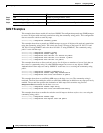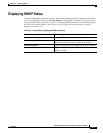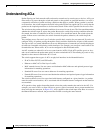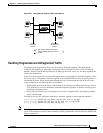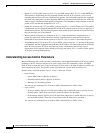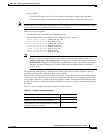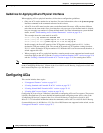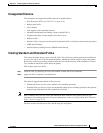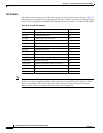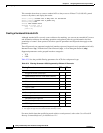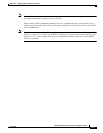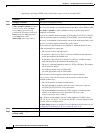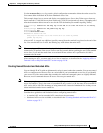
25-6
Catalyst 2950 Desktop Switch Software Configuration Guide
78-14982-01
Chapter 25 Configuring Network Security with ACLs
Configuring ACLs
Guidelines for Applying ACLs to Physical Interfaces
When applying ACLs to physical interfaces, follow these configuration guidelines:
• Only one ACL can be attached to an interface. For more information, refer to the ip access-group
interface command in the command reference for this release.
• All ACEs in an ACL must have the same user-defined mask. However, ACEs can have different
rules that use the same mask. On a given interface, only one type of user-defined mask is allowed,
but you can apply any number of system-defined masks. For more information on system-defined
masks, see the “Understanding Access Control Parameters” section on page 25-4.
This example shows the same mask in an ACL:
Switch (config)#ip access-list extended acl2
Switch (config-ext-nacl)# permit tcp 10.1.1.1 0.0.0.0 any eq 80
Switch (config-ext-nacl)# permit tcp 20.1.1.1 0.0.0.0 any eq 23
In this example, the first ACE permits all the TCP packets coming from host 10.1.1.1 with a
destination TCP port number of 80. The second ACE permits all TCP packets coming from host
20.1.1.1 with a destination TCP port number of 23. Both the ACEs use the same mask; therefore, a
switch supports this ACL.
• When you apply an ACL to a physical interface, some keywords are not supported and certain mask
restrictions apply to the ACLs. See the “Creating a Numbered Standard ACL” section on page 25-9
and the “Creating a Numbered Extended ACL” section on page 25-10 for creating these ACLs.
Note You can also apply ACLs to a management interface without the above limitations. For information, refer
to the “Configuring IP Services” section of the Cisco IOS IP and IP Routing Configuration Guide and
the Command Reference for IOS Release 12.1.
Configuring ACLs
This section includes these topics:
• “Unsupported Features” section on page 25-7
• “Creating Standard and Extended IP ACLs” section on page 25-7
• “Creating Named MAC Extended ACLs” section on page 25-18
• “Creating MAC Access Groups” section on page 25-19
Configuring ACLs on a Layer 2 interface is the same as configuring ACLs on Cisco routers. The process
is briefly described here. For more detailed information about configuring router ACLs, refer to the
“Configuring IP Services” chapter in the Cisco IP and IP Routing Configuration Guide for IOS
Release 12.1. For detailed information about the commands, refer to the Cisco IOS IP and IP Routing
Command Reference for IOS Release 12.1. For a list of IOS features not supported on the switch, see the
“Unsupported Features” section on page 25-7.



